“Maybe it’s a little bit ugly,” conceded Jorge Ortega. It was hard to argue. The Leonardo PZL-Świdnik W-3 Sokół has an appearance that would most charitably be described as “squat.” Yet in the same breath, Ortega described the aircraft as “his mother” — a clear illustration of how well the aircraft has looked after him for over 500 hours. “At sea or in the mountains it’s perfect,” he went on. “We can hoist with full crew, out of ground effect at the top of the mountain.”
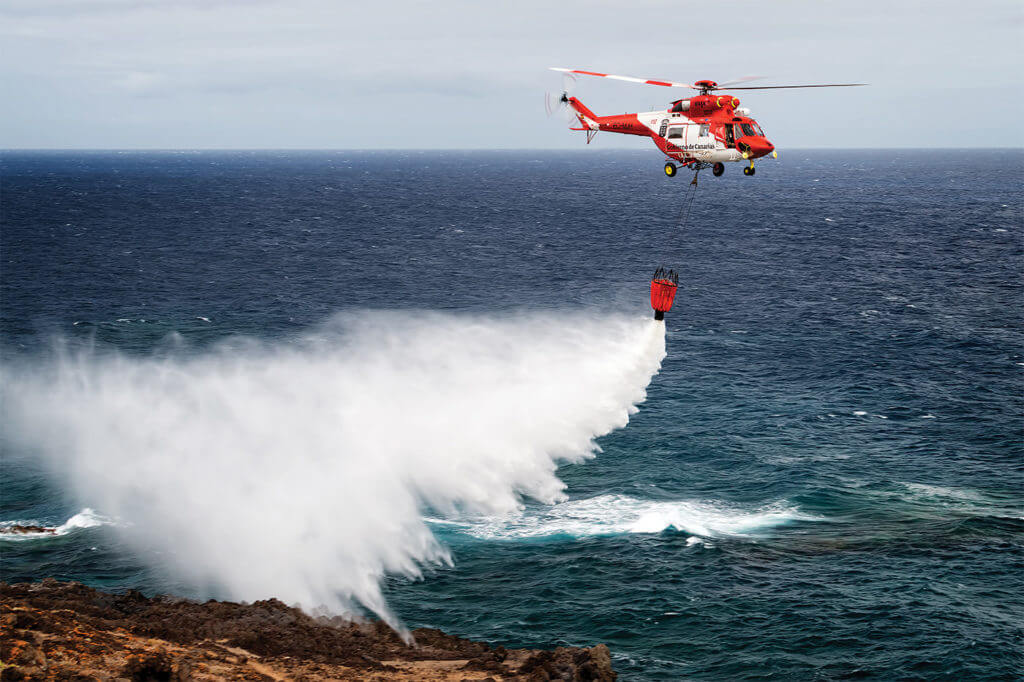
Ortega is a co-pilot with El Grupo de Emergencias y Rescate del Gobierno de Canarias. Better known as GES, the organization is responsible for rescue and emergency aviation throughout the Canaries archipelago, under a six- to eight-year contract that is serviced by Hispánica de Aviación (HASA).
The mountain he referred to is Mount Teide. Standing at 12,198 feet (3,718 meters) on Tenerife — the largest Canary Island — it is the world’s third tallest volcanic structure; base to summit the tallest in the world outside Hawaii. Among the islanders it is simply “The Mountain.”
Most visitors to the Canaries come seeking sun and sand, but at altitude the Atlantic wind that cools the beaches is transformed by the rocks; tearing through narrow gullies seemingly at random. While the climate is subtropical, the terrain varies wildly. Lush greenery gives way to desert, providing a combination of altitude and temperature that would challenge most helicopters and many pilots. In this stunning yet unforgiving environment the utilitarian Sokół is a debutante.
“I am in love with the aircraft,” GES co-pilot Santiago Velasco told me. “Despite its robust looks the handling is smooth and stable, but it has the high maneuverability necessary to conduct firefighting operations or to reach victims trapped in gorges.”
Summer brings no shortage of bathers heading for the beach in shorts and sandals, as well as those apparently prepared to tackle the mountains similarly attired. Dry summers also mean the vegetation takes little encouragement to ignite and wildfires are commonplace.

“Quite often it can be 30 degrees C [85 F] on the beach,” Ortega told me. “The tourists will be happy to go up Mount Teide in t-shirts and flip-flops, but up there it’s minus 4 C [24 F].”
With this variety and tempo of missions, HASA requires an aircraft that has the power to contend with the environment, the cabin space for offshore search-and-rescue (SAR), and the nimbleness to negotiate the mountain crags.
Getting the job done
The W-3 Sokół was the first helicopter entirely produced in Poland. It was designed in the early 1970s by Stanisław Kamínski of PZL-Świdnik and conceived for use by the USSR and satellite states for military and civil missions. Perhaps as a result of its heritage, the aircraft was not widely adopted in the West, and with PZL-Świdnik enduring increasing financial difficulties that beset development of more advanced military variants, the company was acquired by AgustaWestland and has since become part of the Leonardo group.
Although there are only a handful of Sokół operators, mostly in Asia and South America, HASA has one of the largest fleets of the type outside of Poland.
“We have 13 Sokółs in total, because the helicopter is in such high demand for firefighting,” Ortega told me. After winning the GES contract in November 2015, HASA acquired five Sokółs to be stationed at the main islands of Tenerife, Gran Canaria, La Palma, Fuerteventura, and El Hierro. The year 2016 saw the addition of one more aircraft based at Gomera for use during the summer months.
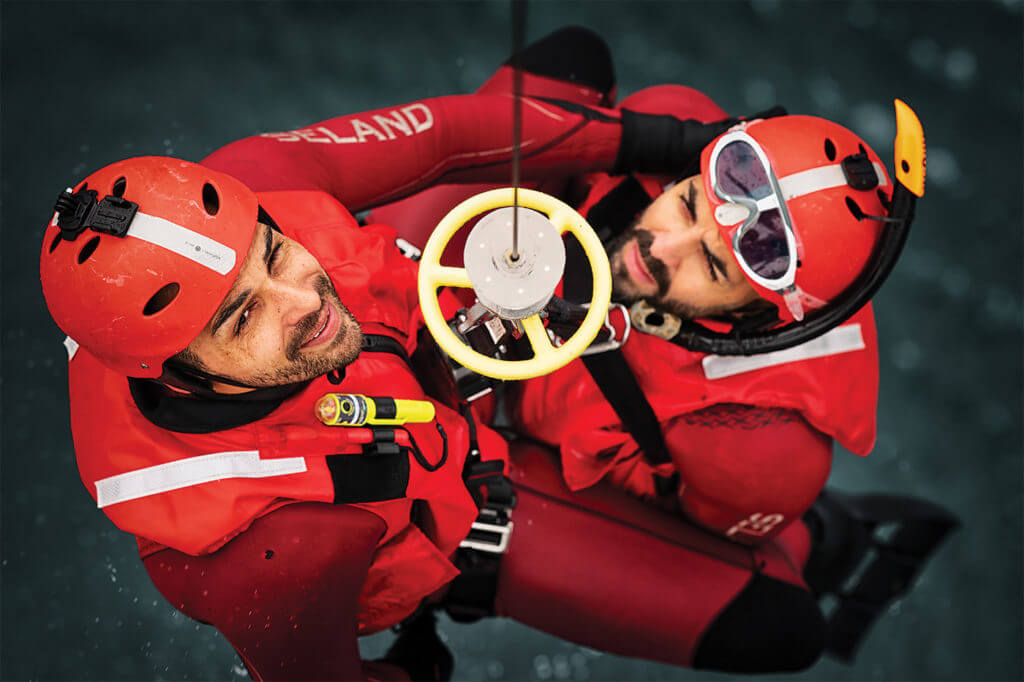
While the aircraft are based at different islands to provide a distribution of assets for rapid SAR response, resources are pooled for firefighting tasks as these usually require more than one aircraft. Crews therefore must be familiar with other islands and operating areas, as they can expect to be moved from island to island as situations develop.
The funding for this program comes principally from the European Regional Development Fund, which provides 85 percent of the budget. The remaining balance is met by the Government of the Canary Islands.
Despite the maritime location, the aircraft was required to have only nominal night and offshore capabilities. With the broader SAR region covered by the AW139s of the Salvamento Marítimo (Spain’s sovereign maritime rescue agency), the Sokółs of GES are only required to cover the 12-nautical-mile territorial limit of the islands themselves.
While an instrument flight rules (IFR) capability was retained, the aircraft’s avionics are extremely basic, consisting almost entirely of traditional “steam” gauges augmented by an aftermarket Garmin GPSMAP 695 and an Apple iPad kneeboard with the Air Navigation Pro app. Even with night vision imaging systems (NVIS), there are serious difficulties inherent in conducting SAR or firefighting at night without the protection that more advanced avionics would offer. For this reason, operations are limited to day only until safe night procedures have been validated.
The mountain king
For now, at least between sunrise and sunset, the Sokół rules the roost in the mountains. With a maximum water payload of 1,590 liters (420 gallons) of water in an SEI Industries Bambi Bucket, it has nearly twice the high-altitude lifting capacity of the Bell 412s that are also operated by the Canaries government.
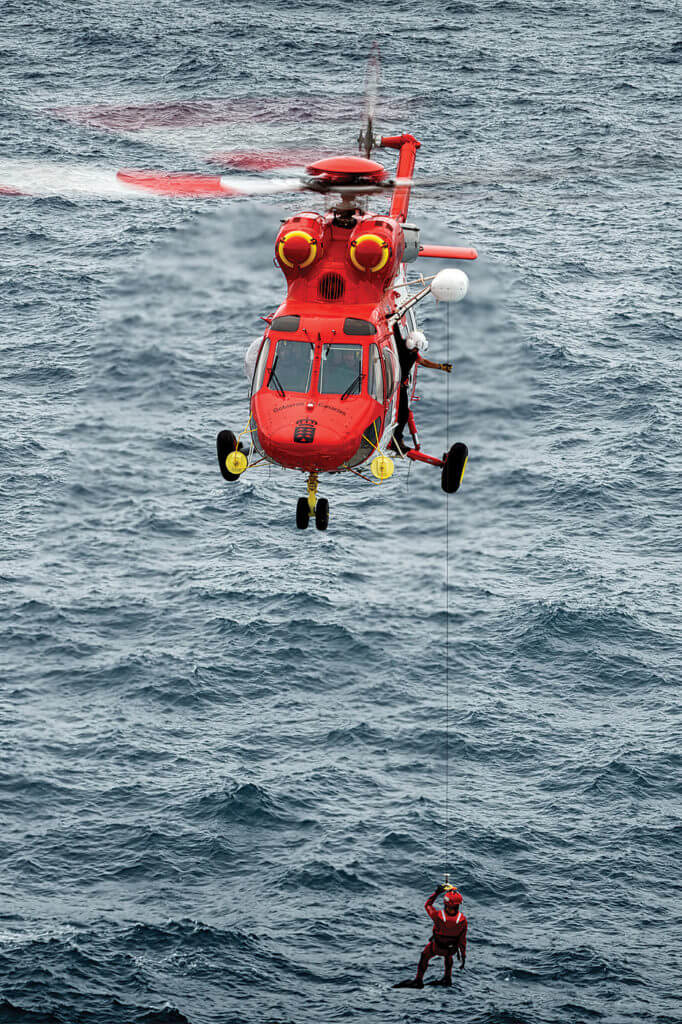
“The highest mountains in Canary Islands are off-limits to the 412, due to power limitations,” Ortega told me.
When undertaking firefighting missions, the normal SAR fit on the cabin interior is stripped out, to ensure maximum performance. This also reserves space for up to 10 fully equipped firefighters to be carried. In the SAR role, the aircraft is fitted with a TRW Aeronautical/Goodrich Rescue Systems electric hoist, which can lift up to 275 kilograms (606 pounds) out to a maximum usable 90 meters (295 feet). GES crews do not have a self-extraction method, such as a rescue basket — their standard operating procedure is to deploy a winchman for all rescue operations.
The location of the winch above the port cabin door appears to be a design oversight, as this door is appreciably smaller than on the other side of the aircraft. However, the starboard door is also much further aft, which would place the pilot a significant distance ahead of the winch operator. In tight confines, it would be possible for this to introduce complications as visual references differed between crewmembers.
In any case, the crews manage to negotiate stretchers in and out of the cabin with relative ease. Within the aircraft, there is room for the SAR role equipment and stretchers, plus a doctor. “The Sokół looks small on the inside, but the cabin is long and high, without any obstructions,” Ortega said.
The vertical room in the cabin is again important for the firefighting role, as Velasco explained that the configuration means firefighters have enough space to stand while carrying their equipment.
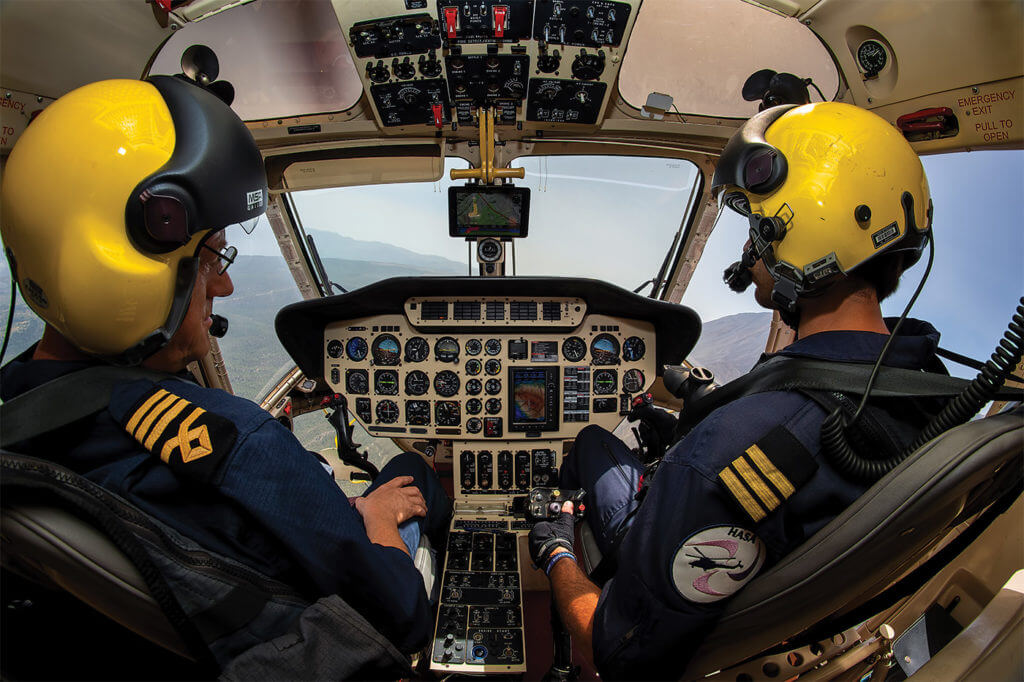
For all of its power and lifting capacity, however, the Sokół is a child of the ’70s. Although the HASA aircraft were built new, the design is now showing its age. In common with other aircraft designed in the same era, the Sokół has little automation and very few pilot aids. It also relies on mechanical system redundancies rather than elaborate electronics.
Well maintained and operated by skilled and knowledgeable personnel, these leave more potential for the crew to decide what level of risk they are prepared to accept, rather than rely on software logic. However, this comes at the cost of limited capabilities, increased cockpit workload, and fewer safeguards.
Granted, there are few if any automation modes or avionics that would be of much assistance when flying during the day in such close proximity to complex terrain features, as makes up much of the task in the islands. “It’s a different kind of flying in the Canaries,” Ortega told me. “With the worst weather in the most difficult terrain, it would be very difficult to properly use an autopilot.”
It’s not difficult to understand their reluctance to rely on automation when hovering and maneuvering the helicopter in very close proximity to obstacles using dynamic and non-standardized profiles. However, the crews are aware of the benefits it would bring in other environments.
“We have to run the whole operation by hand,” said Velasco. “When we are operating in close spaces with sudden winds like gorges or narrow valleys, perhaps the autopilot wouldn’t correct it fast enough, but it would be a great tool at sea operations where it’s harder to keep references during the hover.”
The value of experience
Spanish law requires all SAR pilots to have qualifications in all environments, but to become a co-pilot there’s no minimum hours requirement, although previous experience in SAR or firefighting is beneficial. New pilots to the HASA operation typically start flying firefighting duties, building hours and experience before being trained in SAR, making them employable in the GES task.
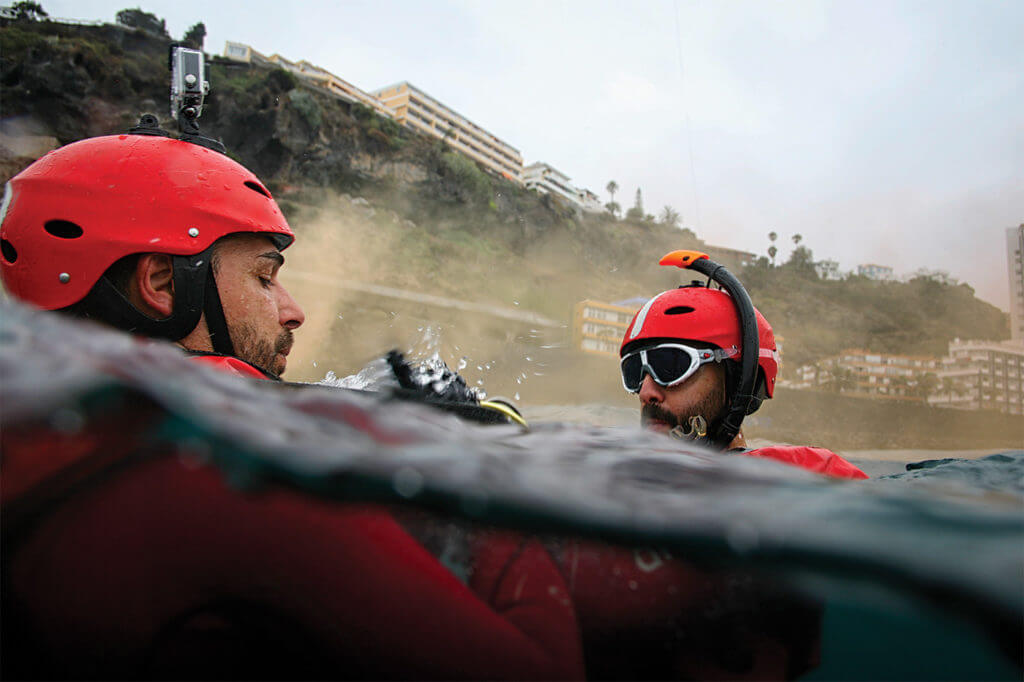
“The company needs pilots and engineers who can resolve the issues that can often come up in our bases,” Velasco told me. “Being island-based poses particular challenges to logistic and maintenance.”
To be eligible as captains, pilots must have a minimum of 1,000 flight hours pilot in command (PIC) conducting offshore SAR, with at least 700 onshore. While it is preferable for captains to have all the necessary qualifications already, non-SAR-qualified captains are recruited and are provided with the necessary training to ensure that they are mission-capable.
“Pilots with high hours on other types might have enough experience to be captains, but they first need to learn how the Sokół behaves — beyond a simple conversion,” added Ortega. “You can learn to fly it in a few hours, but to have the confidence to use it to its full potential takes a lot of experience.”
Typically, senior captains — who are mostly instructors — are crewed with junior co-pilots. Conversely, junior captains with low Sokół experience are crewed alongside co-pilots with greater than 500 hours on type. When airborne, the flying is split between the pilots, who share duties with no hard and fast division of labor in the cockpit.
“It’s not a perfect MCC [multi-crew cooperation] type scenario where one pilot is always flying and the other is always monitoring him,” explained Ortega. “We change the roles in the cockpit according to the situation.”
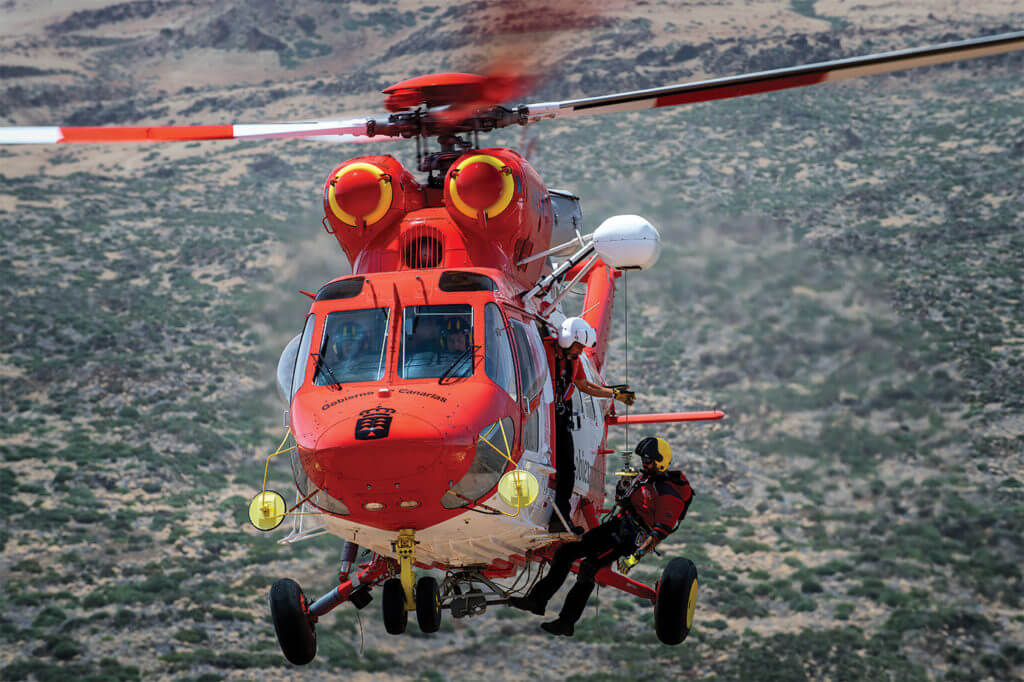
Given the emphasis on daytime operations, normal duty hours are sunrise to sunset; usually around 11 hours on duty at 15 minutes notice. For night operations outside routine hours, this readiness is relaxed to 40 minutes. However, if the mission requires more preparation, either because of navigation to a precise location or due to complex terrain or weather, additional time is taken on the ground, reducing the risk of mistakes in the air that could make the job of locating the casualty more difficult.
Trouble never comes alone
The annual average mission rate equates to just over one rescue per day, but this is rarely the rate at which crews are tasked.
“A normal day might start with someone in the water, then there’s a rescue on Teide,” Ortega told me. “Then we have to land to get the Bambi Bucket because there’s a fire.”
Ortega’s joviality at the prospect of a busy day makes this sound like fairly predictable business as usual, albeit at a busy tempo, but the islands have seen their share of major emergencies with serious risks involved. In 2015, a single act of carelessness resulted in a wildfire that roared across 48,000 hectares (118,000 acres), destroyed property, and cost one firefighter his life. Several Sokółs were instrumental in efforts to bring it under control.
Then, in March 2017, the Teide cable car broke down while 300 people were on the mountain or in the cable cars as temperatures rapidly sank towards freezing. A combined operation involving the Sokółs of GES and other helicopter assets was successful in rescuing those at most risk, lowering up to four people at a time from the stricken gondolas.

However, a consistent highlight of the year for the GES crews is the Transvulcania run, an ultramarathon in which contestants race a 46-mile (74-kilometer) course with more than 14,000 feet of climbing and 13,000 feet of descent. The perhaps unsurprising result is around 50 rescues per day, with two aircraft being placed on standby specifically. They are also required to transport infrastructure such as generators, food, and water to react to any requirements at race checkpoints, either internally or using external sling loads. As Ortega told me, “I love that job because as a pilot I am performing all of the duties that the helicopter can perform.”
In the eye of the beholder
For the crews the busy days are relished; they present opportunities to fly a machine that they love, at the limits of its considerable capabilities. Coupled with the satisfaction that comes with the job, their passion is understandable.
But there are undoubtedly challenges. While the pilots extol their machine’s capability to conquer the mountain that occupies the center of their flying world, their evident enthusiasm makes the task of manually flying a complex aircraft in the Canaries’ unforgiving conditions no less demanding. And even with the current limitation on night-time mountain operations, accomplishing all this with next to no automation is far from a trivial matter.
The Sokół is not perfectly suited for any of the myriad jobs demanded of it, but in this environment it is one of the few helicopters that can perform them all, and its crews love it. Their aircraft is not the most modern; it is certainly not the best looking. But for anyone who has made the mistake of underestimating the terrain of the Canaries to their cost, the utilitarian Sokół might be the most beautiful machine they are likely to see.





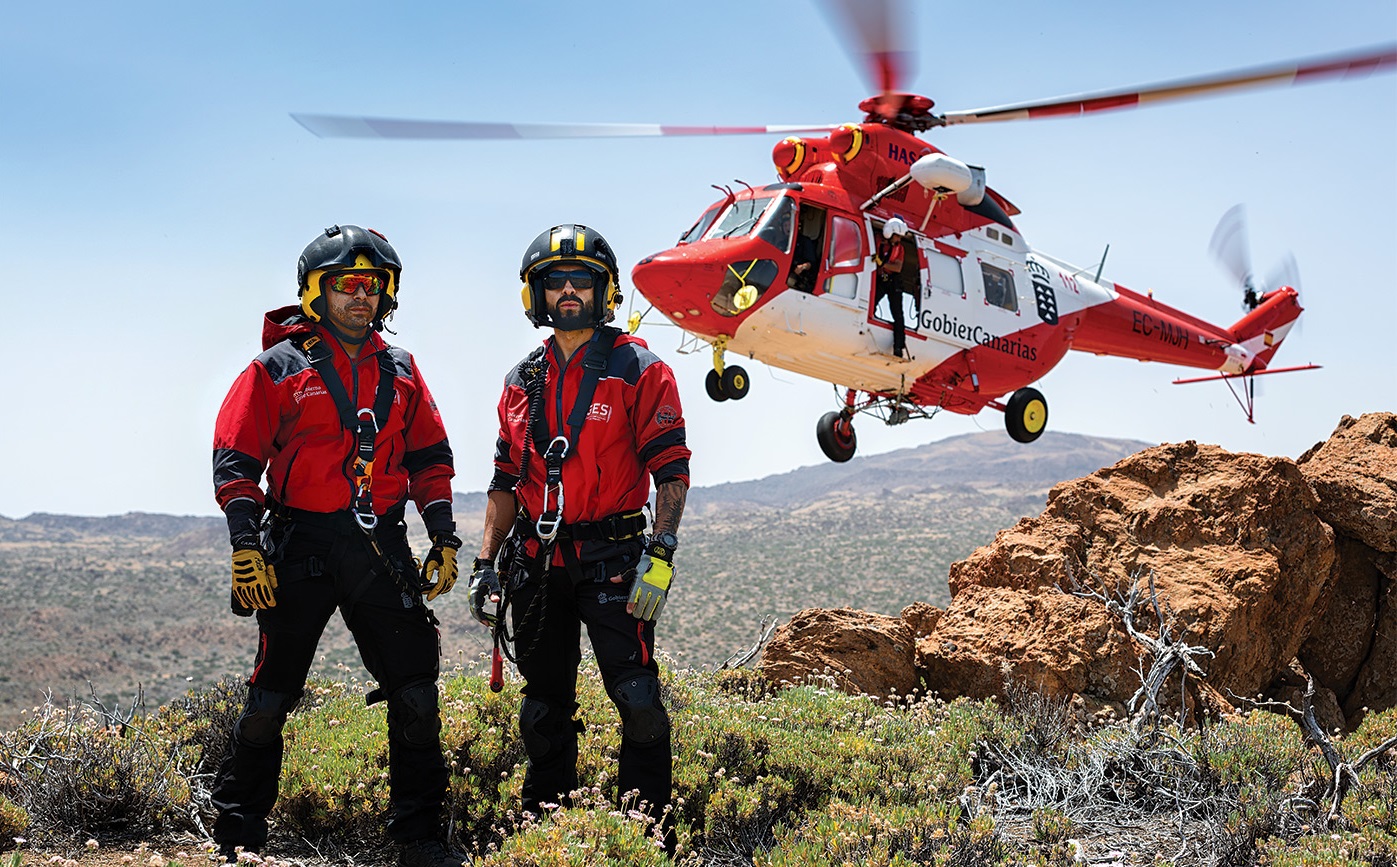
Wow, what an awesome story. I never realized how much these guys do on a daily bases…WOW…. It sure takes an amazing type person to perform these daily task, which, as you can read in this article, is never the same on a day to day bases.
Hats off to these guys, and what heroes in so many ways.
Hi Deborah, thanks for your comment and I’m really pleased you enjoyed the story. The GES team are true professionals and their work, as you say, is as interesting as it is varied. Thanks for reading.